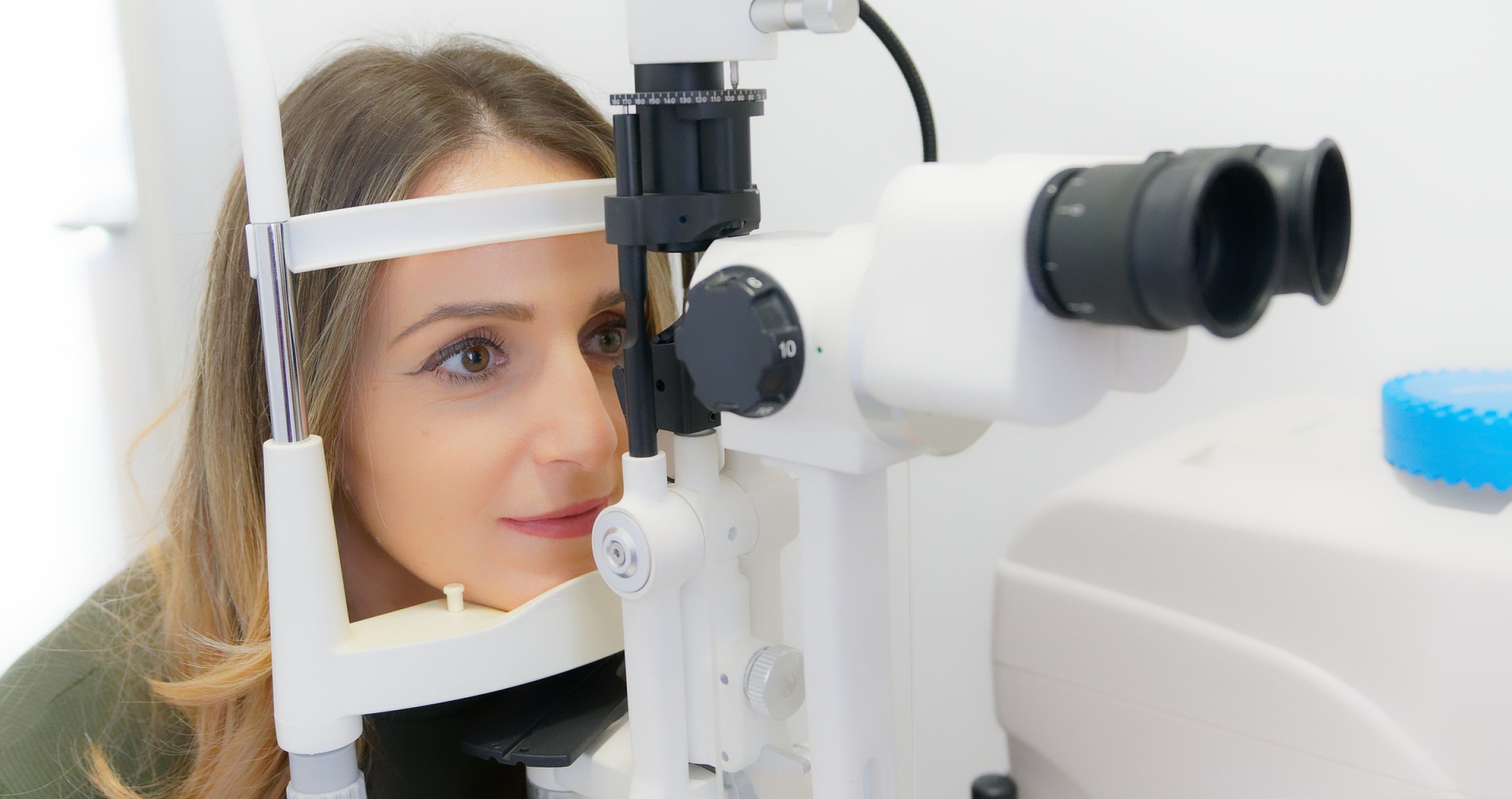Share
A summary of glaucoma research carried out in 2015
2015 proved to be a busy year for glaucoma research, highlighted at both the Association for Research in Vision and Ophthalmology (ARVO) meeting and the World Glaucoma Congress. In addition, one of the main outcomes was the consensus to finalise the new Asia Pacific Glaucoma Guidelines (third edition) due for launch in mid-2016, which will guide glaucoma management across the region over the next few years.

Pathophysiology of glaucoma
Many of the basic assumptions about glaucoma were challenged. New insights into the mechanisms leading to glaucoma, especially normal tension glaucoma, may lead to new treatments in the future.
In a US population-wide study involving more than 83 million participants, Tseng et al evaluated the association between glaucoma and sensitisation to a panel of common indoor allergens.1 Participants with glaucoma had higher rates of sensitisation to cockroach and cat antigens, and lower rates of sensitisation to dog antigens, compared to controls. Clearly, more work is required to evaluate the association between chronic indoor allergen exposure and glaucoma. Despite some inaccurate reporting by the mainstream press of this finding, this paper is insufficient evidence to suggest that cats cause or dogs are protective for glaucoma!
Zeng et al demonstrated a significant association between open angle glaucoma (OAG) and Helicobacter pylori infection through a meta-analysis involving 2275 individuals.2 This positive relationship was observed for OAG and normal tension glaucoma, but not for pseudoexfoliation (PXF) glaucoma. Again, more work is required to understand this association.
MacPherson et al have looked at large scale epidemiology studies in the UK, Denmark and Australia and found a link between irritable bowel syndrome and glaucoma.3 Further work is required to understand the mechanism behind this as well as possible treatments based on this finding.
Lin et al evaluated the association between metformin use and risk of OAG in 150,000 patients with diabetes mellitus.4 After adjusting for confounding factors (including systemic glycemic control), metformin use was associated with reduced risk of developing OAG. This study suggests that metformin, in addition to its use in glycemic control for diabetes, may be reducing OAG risk in multiple ways, such as alterations in inflammatory signaling pathways and potentially neuroprotection.
Chiang et al found that pre-existing mitral valve prolapse was a significant predictor for the development of OAG, after adjusting for possible confounding factors.5 This finding is possibly related to similar extracellular matrix abnormalities in the mitral valve and trabecular meshwork.
In a Melbourne based study, further evidence was put forward suggesting that glaucoma may be a disease of mitochondrial dysfunction with similarities to optic neuropathies such as Leber’s Optic Neuropathy.6
The genetics of glaucoma
Although the genetics of glaucoma is still poorly understood, two significant findings were made in 2015 that help our understanding of this field. Firstly, a new gene was linked to PXF. CACNA1A, a gene implicated in the construction of voltage dependent calcium channels, found on chromosome 19 had a slight but significant correlation with PXF.7 This is the first genetic locus linked to PXF outside of LOX1, which is the common genetic association with PXF.
As part of yet another Gene Wide Association Study, a new locus, TGFBR3 on chromosome 1 has been implicated in primary open angle glaucoma8. That brings the number of new genes consistently associated with OAG discovered in the last decade to 10. The task now is determine what these genes do, their true clinical significance and ways they can be targeted and modulated to improve glaucoma therapy. Some insights may come from a study from the Shiley Eye Institute in San Diego which looked at the interaction of two of these significant genes, SIX/SIX and a protein product of an isoform of CDKN2A, leading to cell death in samples from patients with OAG as well as a mouse model of glaucoma with raised intraocular pressure.9 Further studies such as this may help us understand the molecular mechanisms behind glaucoma and lead to new genetic-based therapies perhaps raising the possibility of personalised medicine for glaucoma.
Working towards earlier diagnosis and more accurate monitoring
Studies evaluating imaging modalities of the macula ganglion cell layer, retinal nerve fibre layer and optic nerve head may lead to more refined and reliable methods of detecting of structural damage from glaucoma and hence lead to earlier diagnosis before significant visual loss occurs. Many of the research advances pertain to improvements of imaging the retinal nerve fibre layer.
Using Fourier-domain optical coherence technology, a new structural diagnostic index was described that was derived from combining disc variables, peripapillary nerve fibre layer and macular ganglion cell complex measurements.10 This index appears to have improved accuracy for glaucoma diagnosis.
An adaptive optics scanning light ophthalmoscope (AO-SLO) was compared to current optical coherence tomography (OCT) technology; the AO-SLO images were able to reveal details of glaucomatous damage that were difficult to detect using OCT.11
One of the big issues for management of glaucoma in the foreseeable future is how to ensure that the patients at the highest risk of going blind from glaucoma are seen and treated appropriately. With an aging population and limited clinical resources this is liable on to get worse. Artificial neural networks (ANNs), which have the capacity to improve by artificial learning, fall into the spectrum of artificial intelligence technology. They have the potential to improve accuracy and reduce burden of resources required to diagnose and monitor glaucoma patients. Oh and colleagues described an ANN approach for differentiating OAG from glaucoma suspects without the aid of a visual field test.12 Their ANN model predicted OAG with an accuracy of 84.0%, sensitivity of 78.3%, and specificity of 85.9%.
Landers et al evaluated the utility of ibopamine, a topical drug which temporarily increases aqueous production, in the setting of glaucoma diagnosis.13 They found that glaucoma suspects, stable glaucoma patients and rapidly progressing glaucoma patients responded differently to the challenge. Such a test may have a role as a diagnostic aid for uncertain cases, or may help stratify stable from rapidly progressive glaucoma patients from the outset, which would be useful in determining optimal monitoring strategies for patients.
Glaucoma Therapy
A. Medical therapy
Eye drops to lower intraocular pressure (IOP) are still the mainstay of glaucoma treatment and are likely to be in the future. Despite promising initial data over the last few years, no new class of glaucoma medication has reached mainstream acceptance since the advent of prostaglandin analogues over a decade ago. Rho Kinase inhibitors are still being developed and tested but with the exception of Japan have not gained widespread acceptance or regulatory approval. This is essentially because they do not offer an improvement over existing therapies in terms of IOP reduction. Nevertheless, with further development they may yet become another useful treatment modality for glaucoma. A major research and development area is new and improved methods of drug delivery – especially delayed release and depot preparations. ARVO this year had many poster presentations of depot release preparations of many commonly used glaucoma medications. The largest trial currently underway is the ARTEMIS I and II trials testing a depot intracameral bimatoprost preparation. It is early days in a large study so results are still some time away. There are many centres across Australia involved in this trial.
Poor treatment drug-regimen adherence continues to be a major challenge in glaucoma care. Although this behaviour is difficult to detect and address, current studies are evaluating the nature of poor adherence, and possible targets for intervention.
In the US, a study on Medicare prescription data found that switching patients from non-generic to generic prostaglandin analogue preparations may improve patients' drug-regimen adherence, possibly related to lowered patient costs.14 Yet cost is not the only issue. When 190 glaucoma patients were evaluated for potential barriers to treatment adherence, 71% of the cohort reported usually multiple barriers to adherence, including difficulty instilling drops, forgetfulness and impracticalities with the medication schedule.15 Findings such as these will continue to push the development for glaucoma treatments that rely less on patient adherence factors, such as laser treatments and depot medical preparations.
B. Minimally invasive glaucoma surgery (MIGS)
Minimally invasive glaucoma surgery, involving tiny microstents inserted into the trabecular meshwork and/or suprachoroidal space, continues to gain traction as either an adjunct to phacoemulsification or stand-alone surgery to reduce IOP. In 2015 a randomised control trial evaluated IOP lowering from insertion of the Hydrus Microstent (Ivantis Inc.) into Schlemm’s canal from the anterior chamber.16 Intraocular pressure was significantly lower at 2 years in the group treated with Hydrus plus cataract surgery (16.9±3.3 mmHg) compared to cataract surgery alone (19.2±4.7 mmHg P = 0.0093), with no major differences in safety outcomes.
C. Glaucoma filtration surgery
A large UK study highlighted the trend across the world of increased use of glaucoma drainage tubes, although trabeculectomy was still the gold standard for surgical management of glaucoma.17 In 2015 the 5 year results looking at what sort of tube to use (valved Ahmed vs non valved Baerveldt) were published.18 This study showed that better long term IOP control was achieved, and fewer additional operations required, when non valved Baerveldt tubes were used, despite an increased risk of hypotony (low IOP). We are still looking for an ideal aqueous drainage device. There are many devices currently being tested though none of the clinical trial studies are large enough to adequately comment on efficacy and safety. One recent study of a new mini valved device from Switzerland is showing some promise in rabbits.19
Angle closure
There has been some recent interest on the influence of angle closure on diurnal IOP fluctuations. Diurnal IOP fluctuations, in particular night-time/early morning IOP spikes, may help explain why some patients have progressive glaucoma despite consistently normal IOPs measured during office hours. This is particularly an issue for normal tension glaucoma, as well as angle closure glaucoma; in the later condition, the degree of angle narrowing (and hence IOP rise) can increase with pupil dilation in the dark. It is difficult to clinically measure diurnal IOP fluctuations – strategies include frequently repeated tonometric IOP sampling throughout a 24 hour period, and indirect estimation of IOP changes using 24 hour contact lens sensors, such as the Triggerfish contact lens sensor (® Sensimed). The Triggerfish does not directly measure IOP; it samples voltage changes induced by changes in corneal curvature. One drawback of this technology is we do not know how this data translates precisely into IOP measurements.
Sanchez-Parra et al evaluated various anterior segment OCT angle parameters for association with diurnal IOP fluctuation.20 Diurnal IOP fluctuation was associated with several parameters reflecting smaller angle dimensions in both light and dark conditions, indicating a potential association between narrow angles and greater diurnal IOP fluctuations.
Tan et al used the Triggerfish contact lens to sample diurnal IOP fluctuations in 25 eyes with primary angle closure glaucoma (PACG).21 Significant differences in circadian IOP fluctuation were identified between stable PACG eyes and those with progressive glaucomatous damage; again highlighting the critical importance of 24-hour IOP measurement and control.
Lasers in glaucoma
Argon laser iridoplasty is occasionally performed in the setting of persistent appositional angle closure despite a patent peripheral iridotomy. Its use is controversial, as its utility in long term IOP control is questionable. To help elucidate this issue, argon laser iridoplasty was evaluated in a Singapore-based randomised clinical trial. Compared to topical medication with prostaglandin analogues, the laser treatment had poorer IOP control and a higher failure rate.22 This evidence does not support routine use of argon laser iridoplasty in the setting of chronic angle closure; however the treatment is still useful in select cases of plateau iris syndrome, or to break an attack of acute angle closure crisis.
The same group evaluated selective laser trabeculoplasty (SLT) in the setting of PACG. SLT, typically reserved for cases of OAG, can be useful in cases of angle closure glaucoma if the angle has been previously opened by a procedure such as laser iridotomy. This group found a good efficacy of the treatment in the short term, comparable to monotherapy with a prostaglandin analogue.
With increasing uptake of laser assisted cataract surgery, the potential of IOP rise on docking, and the potential risks for patients with glaucoma undergoing cataract surgery, requires evaluation. Darian-Smith et al measured the transient rise in IOP during docking for femtosecond laser laser assisted cataract surgery.23 Eyes with glaucoma (n=100) had a greater rise in IOP (17.4 ± 7.4 mm Hg) compared to 43 eyes without glaucoma (14.1 ± 7.2 mm Hg, p = 0.014). However the true significance of these results is unknown in terms of the potential implication of laser assisted cataract surgery on glaucoma progression rates.
The impact of glaucoma on daily function
Patients with glaucoma have reduced function of intrinsically photosensitive retinal ganglion cells (ipRGC) that are important in pupillary control and circadian regulation. Using polysomnography, decreased ipRGC function caused by glaucoma affected pupillary response and sleep quality.24 Poor sleep quality is an important health determinant, and can be associated with cardiovascular or respiratory illness. The real life implication of glaucoma on patients’ sleep requires further evaluation.
Glaucoma patients have an increased risk of falling that may be related to impaired balance from loss of visual cues. Using a dynamic virtual reality environment, Diniz-Filho and colleagues evaluated the relationship between postural control and history of falls in patients with glaucoma.25 The newly developed postural metrics described in this study may help to glean new insights into balance control and the increased risk of falls in patients with glaucoma.
Novel ideas
Some relatively new technologies and ideas were evaluated in the context of glaucoma.
Denis et al evaluated a novel miniaturized delivery device to deliver high-intensity focused ultrasound (HIFU) cyclocoagulation to eyes with refractory glaucoma.26 The overall tolerance of the technique was good, with no serious adverse events; average IOP reduction from baseline was 32-36% at 12 months. HIFU is a promising technology that may be an alternative energy source to diode laser when performing cyclodestructive procedures.
Law et al evaluated acupuncture as a potential treatment for glaucoma.27 Acupuncture had no overall effect on diurnal IOP or visual acuity but may temporally increase the IOP immediately after a treatment session. The results should be interpreted with caution due to the low number of participants completing the study (n=11).
Finally, based on technology used in the neurosurgical treatment of hydrocephalus, a novel form of aqueous drainage to the peritoneum using an oculo-peritoneal shunt was described.2
Conclusion
Despite a myriad of new and exciting studies recently published, and more on the horizon, much remains to be learnt about glaucoma, in an effort to tackle some of the major issues facing health care practitioners, patients and their families. More work is required to better understand the cause of glaucoma, if we are ever to find new and better treatments. New technologies, such as artificial neural networks and increasingly refined imaging modalities, may aid in more accurate and ultimately more cost-effective means of glaucoma diagnosis and ongoing monitoring. Treatment adherence remains a major obstacle for preventing glaucomatous progression, and novel technologies and treatments may help address these issues. Finally, with a bewildering array of new surgical options, more work is required to delineate which treatments are best suited to manage our patients with glaucoma.




